Lower Manhattan: Preparing for the Future
Afternoon 2:00pm (EDT) / 8:00pm (CEST)
After the British takeover of New York, the cultural and business relationship between the Dutch and New York continued despite England’s attempts to restrict it with its various Navigation Acts. Though much of the Dutch history of the region has been sadly lost or forgotten, place names and words remain: Brooklyn (Breuckelen), Staten Island (Staaten Eiland), Harlem (Haerlem), Catskill, and Kinderhook, along with cookie (koekje), coleslaw (koolsla), waffle (wafel), and Santa Claus (Sinterklass). Fast forward to the 21st century, New York City continues to be recognized as a global center for the exchange of cultures, resources, and ideas. The impact of the artists, architects, and urban designers of today’s Netherlands continue to inspire both New York and the world. The NetherlandsNOW program focuses on the contributions and the synergies between the USA and the Netherlands, and showcases how the exchange of knowledge, innovation, and ideas can help address the challenges our built and natural environment face today. Contemporary Dutch architects are international leaders in designing responses to today’s urban issues of housing, resiliency, mobility, and public space. This program is in two parts: Framing the Future: Dutch Architects in New York, which highlights the work of Dutch architects currently practicing in New York and reflects on their cross-cultural experiences, and Design Innovations: A Panorama of Dutch Architects Today, which showcases the work of established and emerging firms in the Netherlands.
Moderator:
Catherine McVay Hughes, Community Activist & Board of Directors, Lower Manhattan Development Corporation
People First in Lower Manhattan
Alice Shay, Principal, Buro Happold
John Massengale, AIA CNU, Architect, Urbanist, Massengale & Co LLC
Ben Furnas, Executive Director, Transportation Alternatives
Emily Weidenhof, Assistant Commissioner, NYC DOT
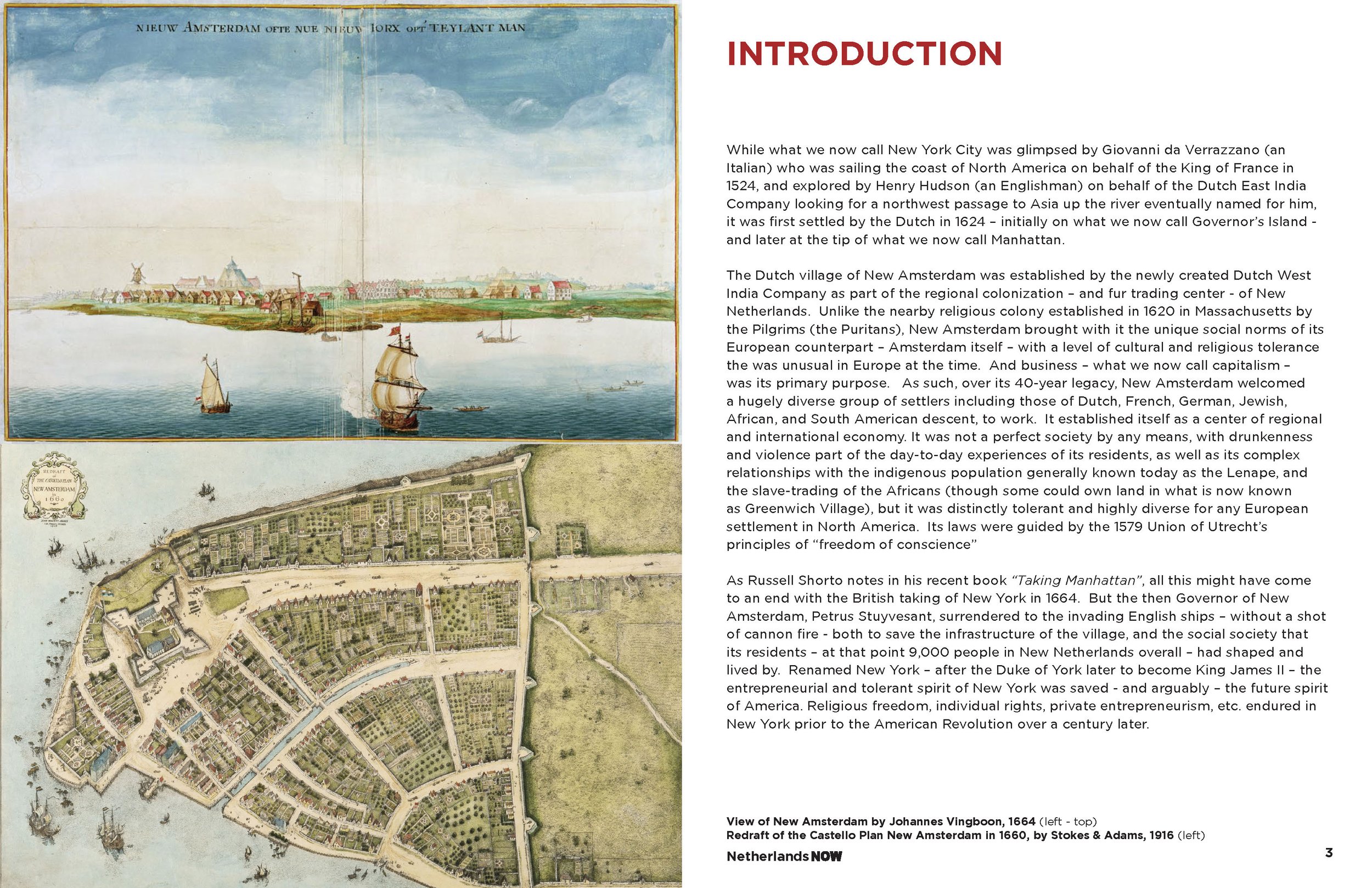



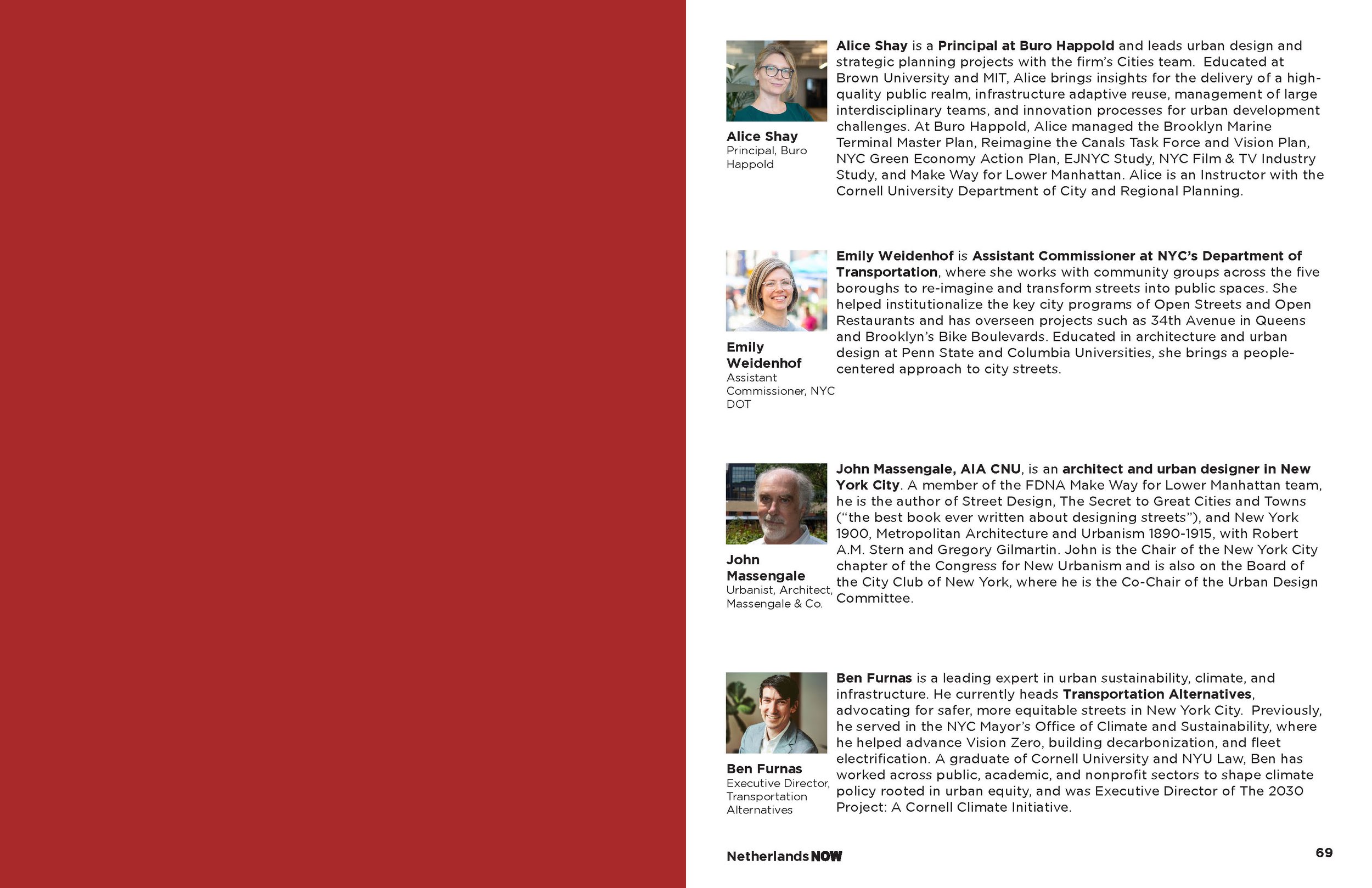




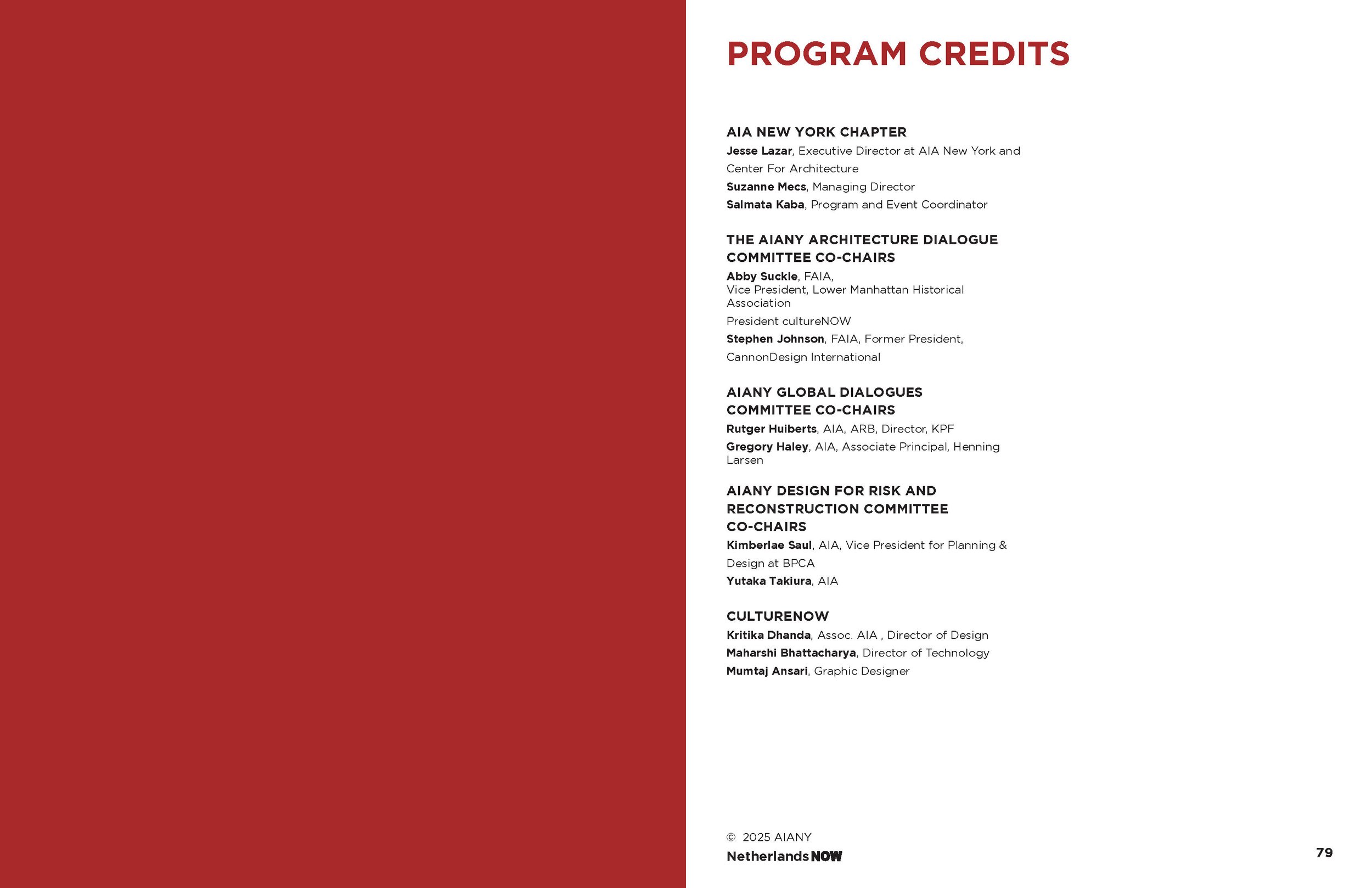
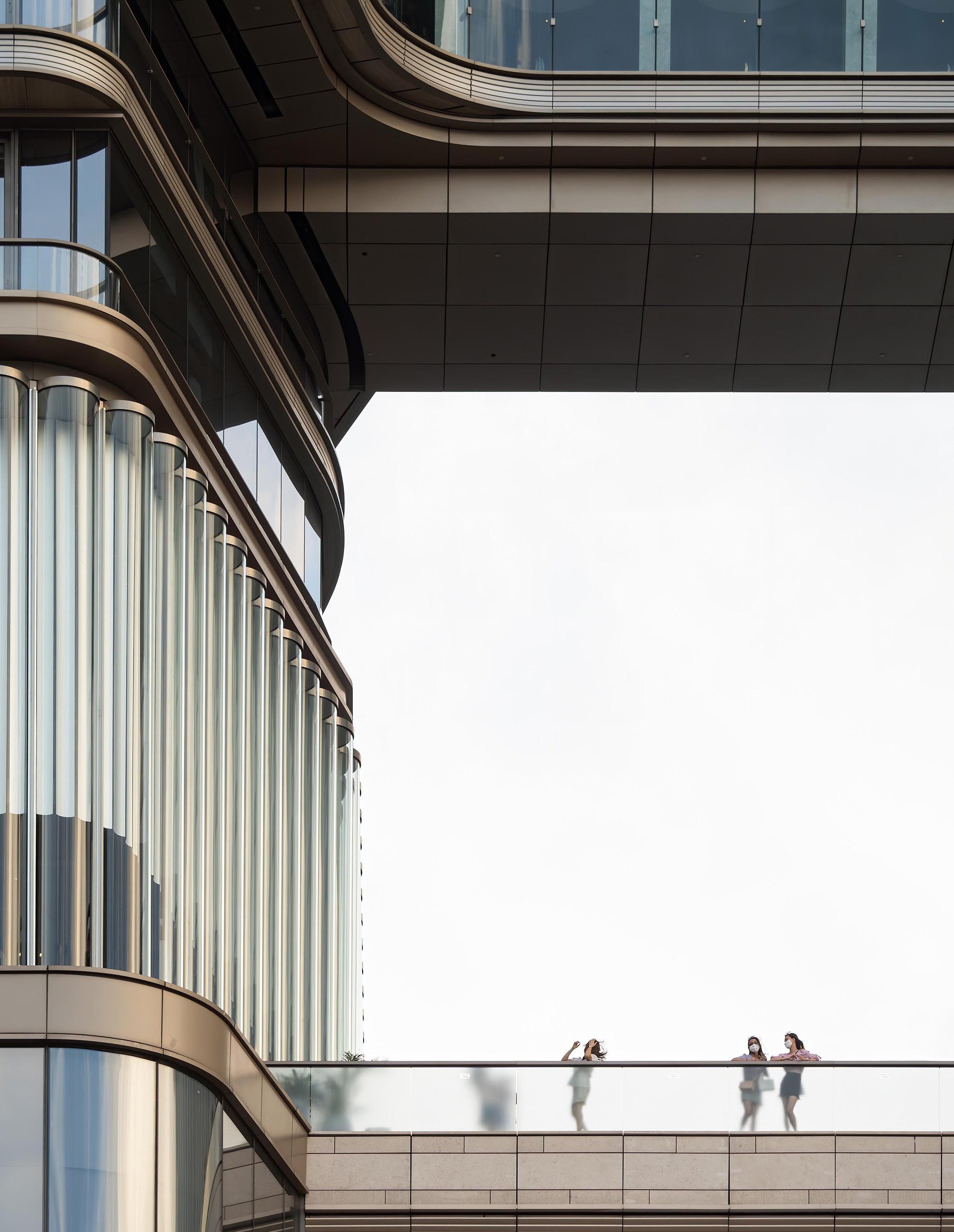
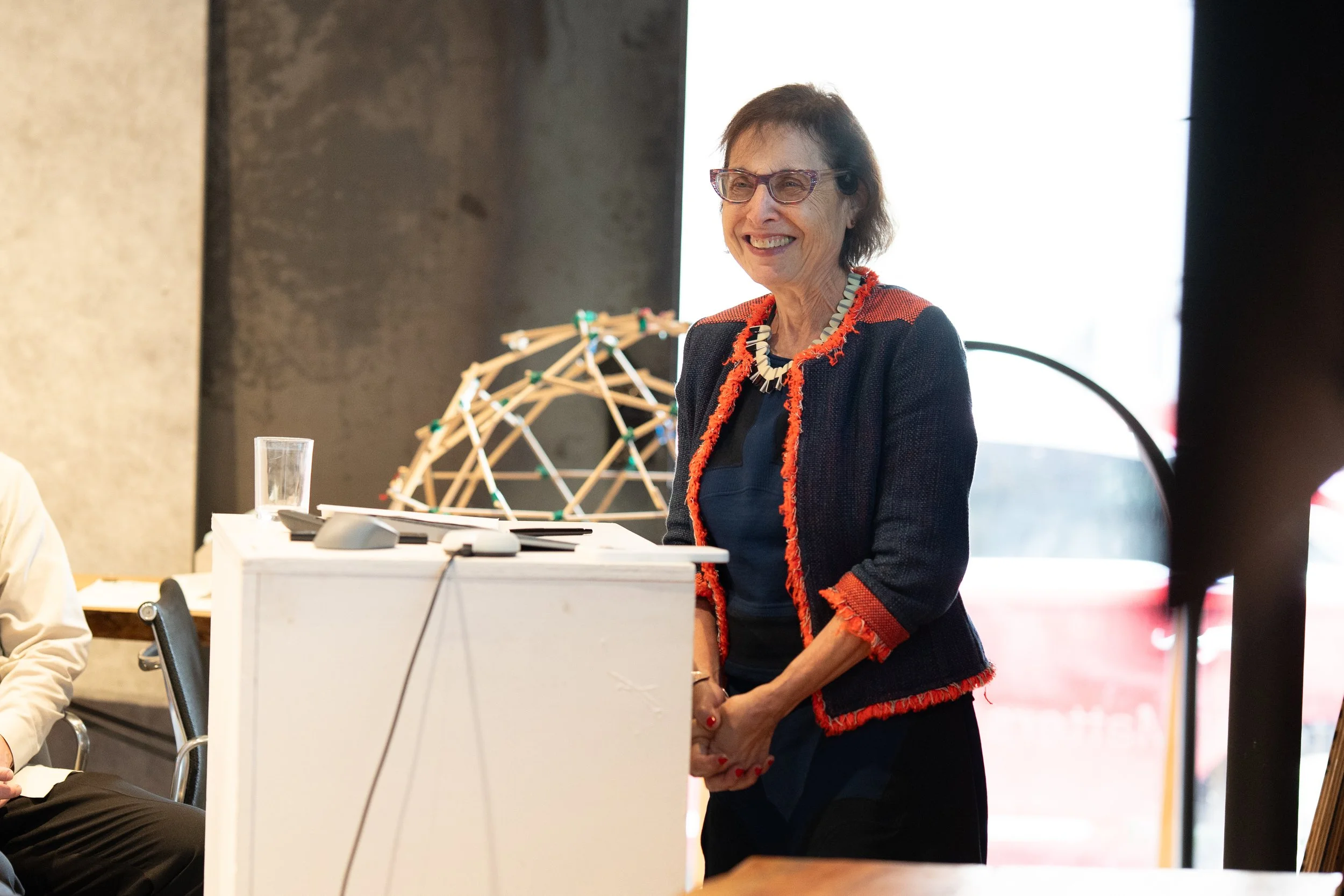




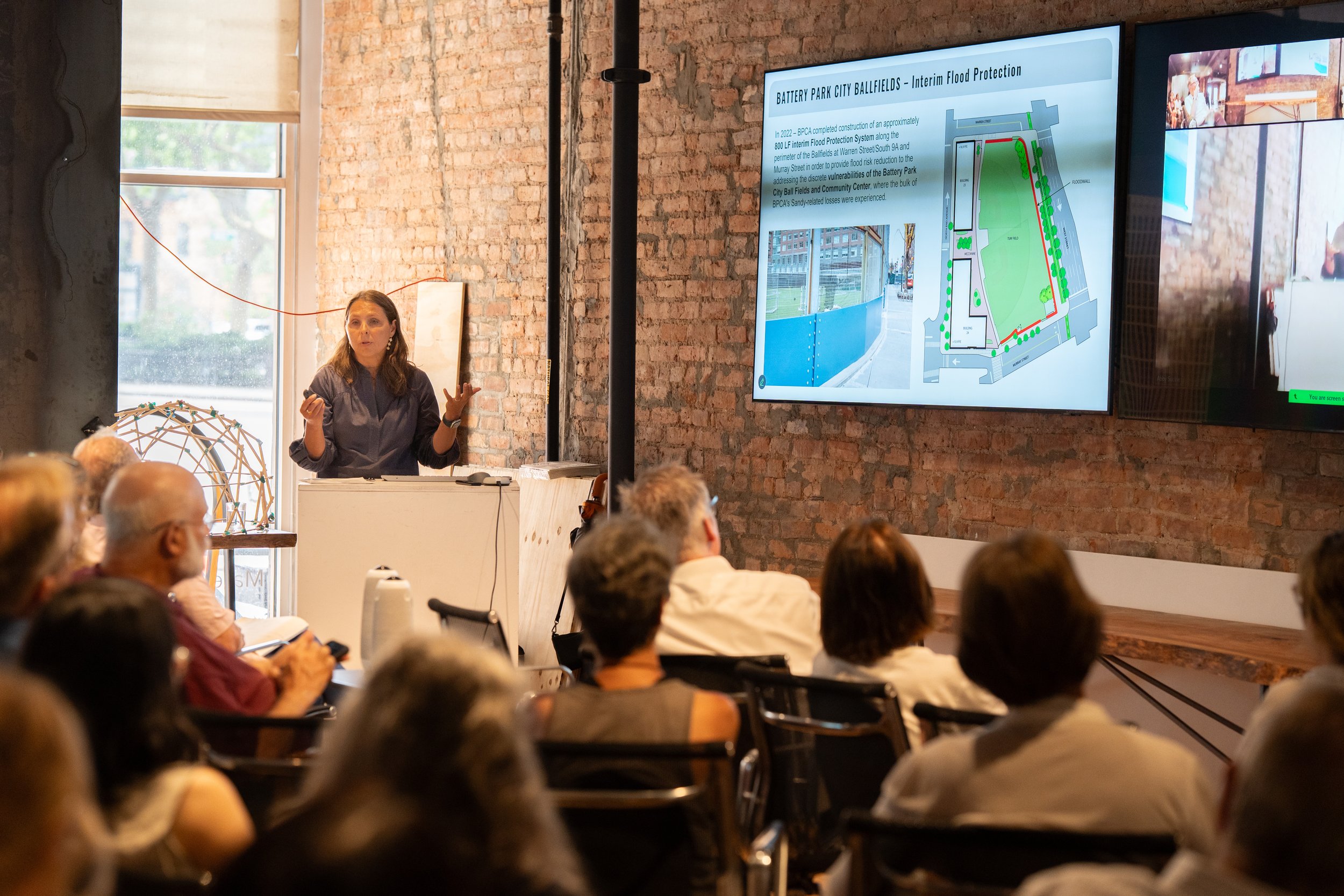

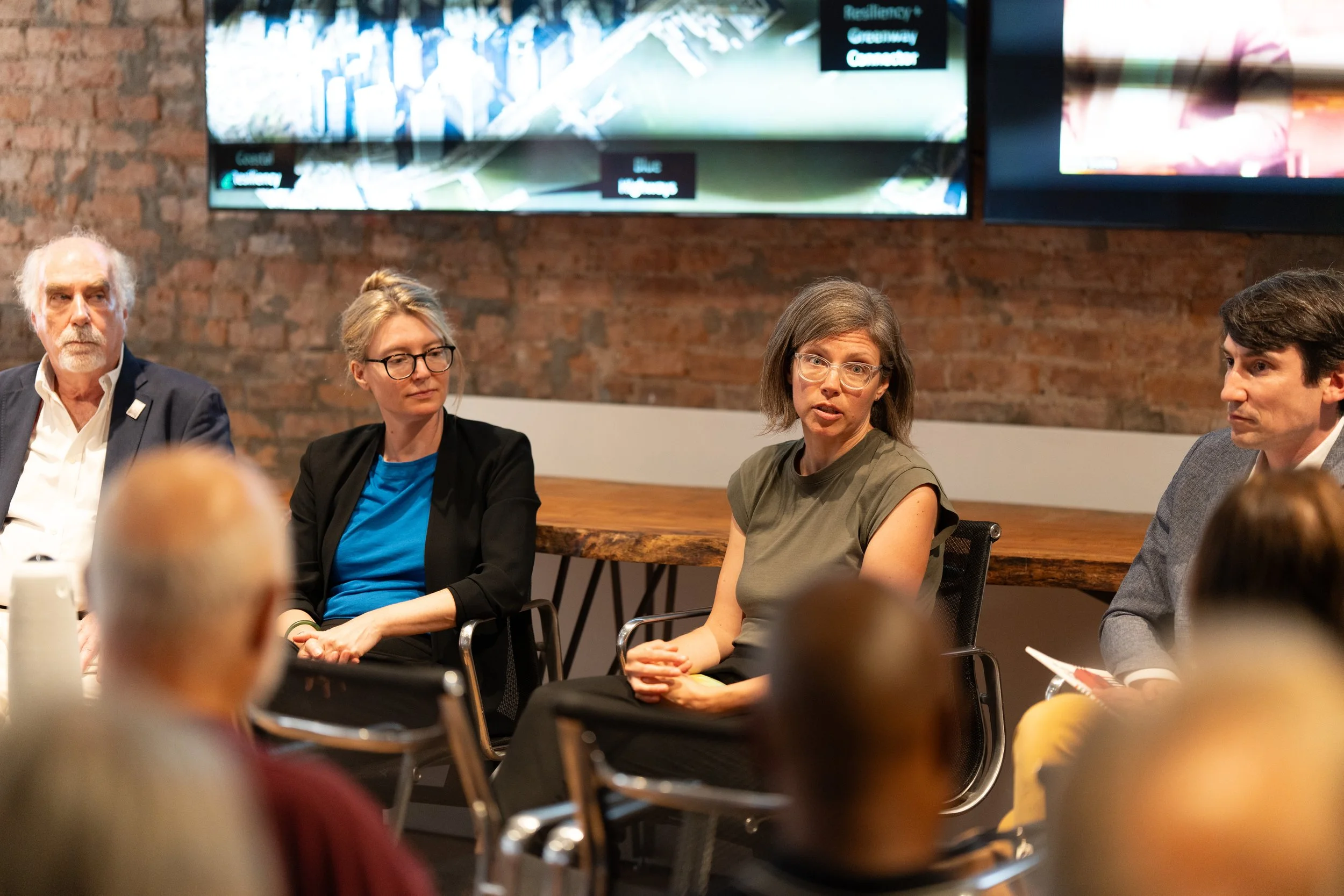

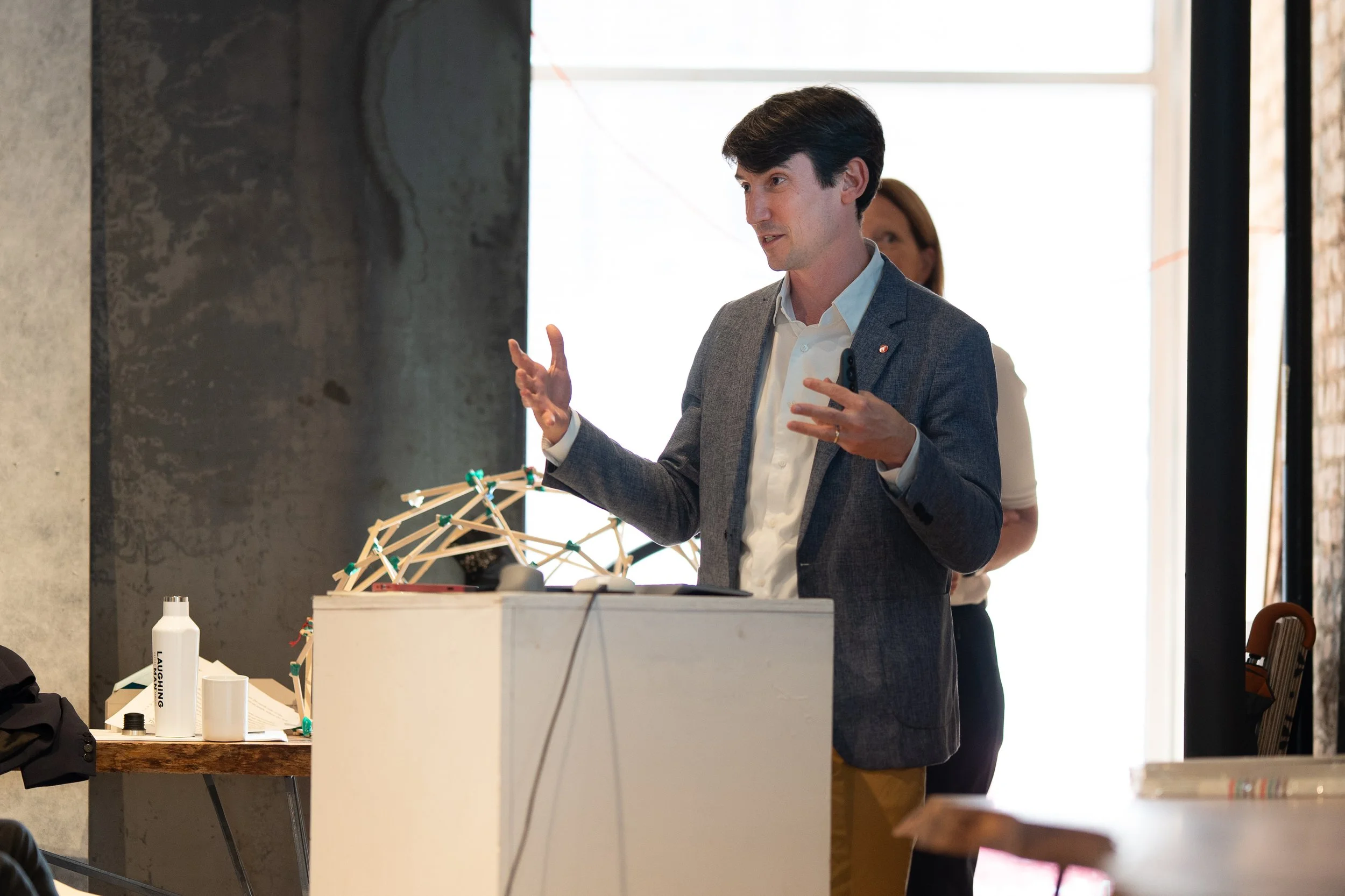

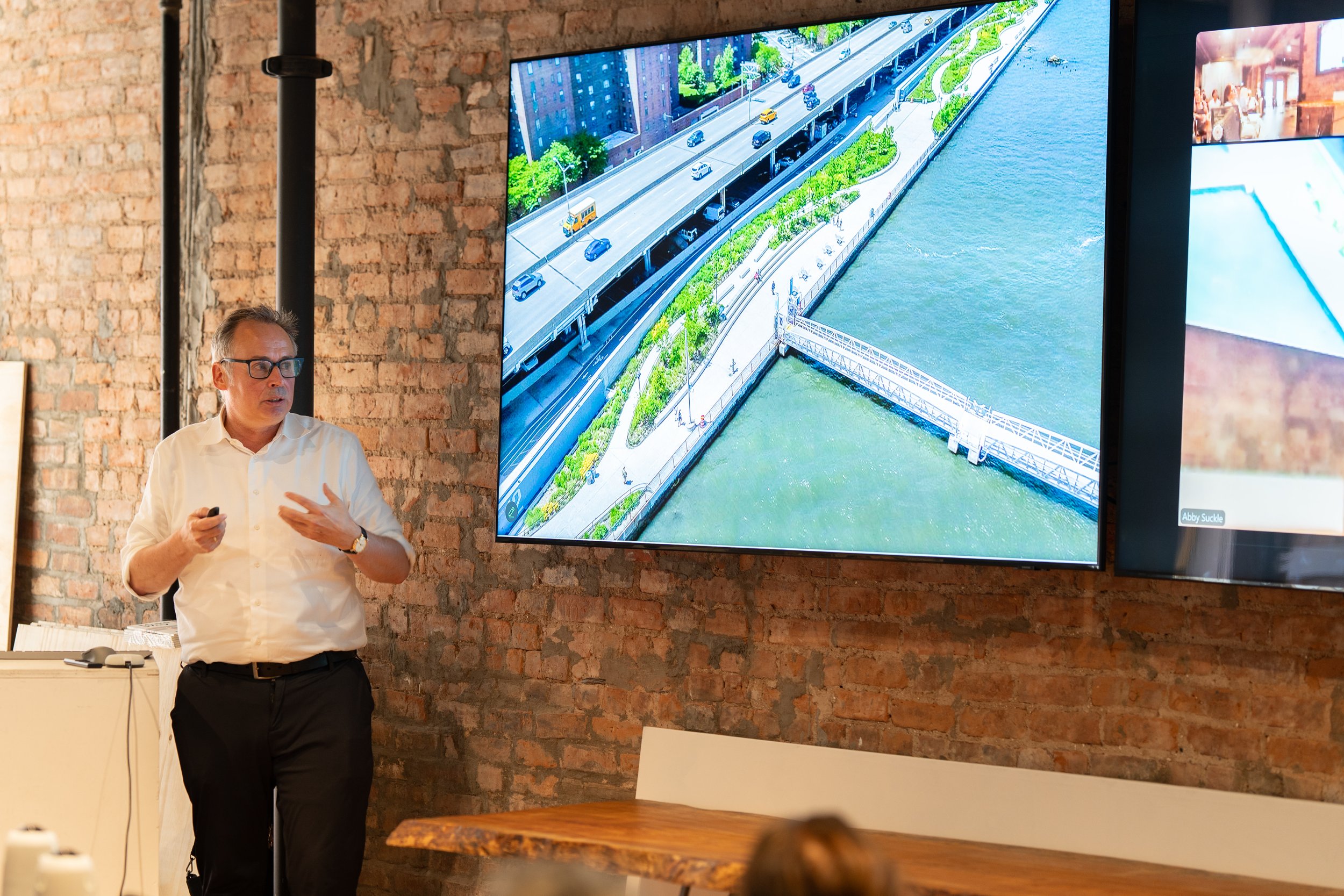
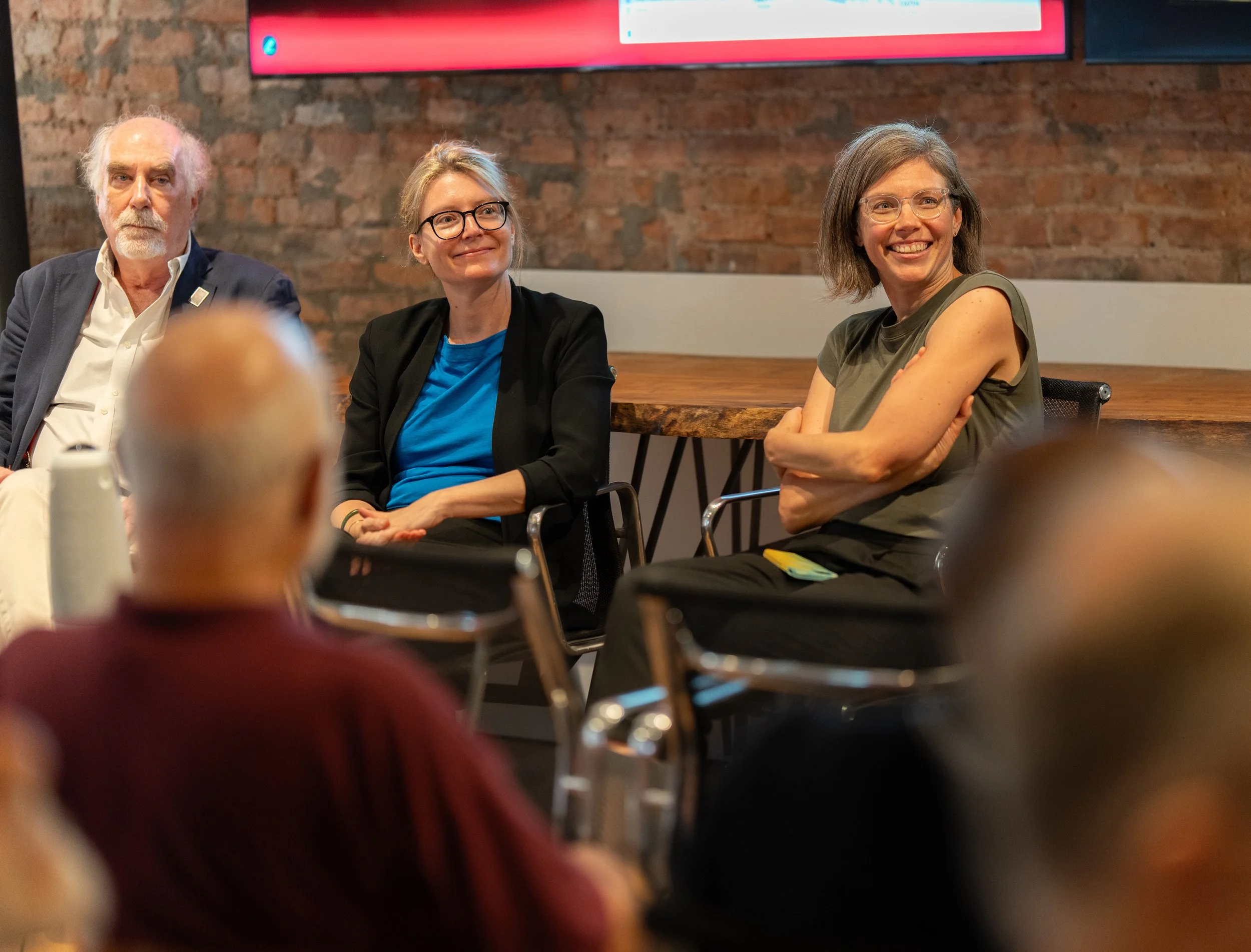
Alice Shay is a Principal at Buro Happold and leads urban design and strategic planning projects with the firm’s Cities team. Educated at Brown University and MIT, Alice brings insights for the delivery of a highquality public realm, infrastructure adaptive reuse, management of large interdisciplinary teams, and innovation processes for urban development challenges. At Buro Happold, Alice managed the Brooklyn Marine Terminal Master Plan, Reimagine the Canals Task Force and Vision Plan, NYC Green Economy Action Plan, EJNYC Study, NYC Film & TV Industry Study, and Make Way for Lower Manhattan. Alice is an Instructor with the Cornell University Department of City and Regional Planning.
John Massengale, AIA CNU, is an architect and urban designer in New York City. A member of the FDNA Make Way for Lower Manhattan team, he is the author of Street Design, The Secret to Great Cities and Towns (“the best book ever written about designing streets”), and New York 1900, Metropolitan Architecture and Urbanism 1890-1915, with Robert A.M. Stern and Gregory Gilmartin. John is the Chair of the New York City chapter of the Congress for New Urbanism and is also on the Board of the City Club of New York, where he is the Co-Chair of the Urban Design Committee.
Ben Furnas is a leading expert in urban sustainability, climate, and infrastructure. He currently heads Transportation Alternatives, advocating for safer, more equitable streets in New York City. Previously, he served in the NYC Mayor’s Office of Climate and Sustainability, where he helped advance Vision Zero, building decarbonization, and fleet electrification. A graduate of Cornell University and NYU Law, Ben has worked across public, academic, and nonprofit sectors to shape climate policy rooted in urban equity, and was Executive Director of The 2030 Project: A Cornell Climate Initiative.
Emily Weidenhof is Assistant Commissioner at NYC’s Department of Transportation, where she works with community groups across the five boroughs to re-imagine and transform streets into public spaces. She helped institutionalize the key city programs of Open Streets and Open Restaurants and has overseen projects such as 34th Avenue in Queens and Brooklyn’s Bike Boulevards. Educated in architecture and urban design at Penn State and Columbia Universities, she brings a peoplecentered approach to city streets.
At Waters Edge: Resiliency for Lower Manhattan
Afternoon 2:00pm (EDT) / 8:00pm (CEST)
After the British takeover of New York, the cultural and business relationship between the Dutch and New York continued despite England’s attempts to restrict it with its various Navigation Acts. Though much of the Dutch history of the region has been sadly lost or forgotten, place names and words remain: Brooklyn (Breuckelen), Staten Island (Staaten Eiland), Harlem (Haerlem), Catskill, and Kinderhook, along with cookie (koekje), coleslaw (koolsla), waffle (wafel), and Santa Claus (Sinterklass). Fast forward to the 21st century, New York City continues to be recognized as a global center for the exchange of cultures, resources, and ideas. The impact of the artists, architects, and urban designers of today’s Netherlands continue to inspire both New York and the world. The NetherlandsNOW program focuses on the contributions and the synergies between the USA and the Netherlands, and showcases how the exchange of knowledge, innovation, and ideas can help address the challenges our built and natural environment face today. Contemporary Dutch architects are international leaders in designing responses to today’s urban issues of housing, resiliency, mobility, and public space. This program is in two parts: Framing the Future: Dutch Architects in New York, which highlights the work of Dutch architects currently practicing in New York and reflects on their cross-cultural experiences, and Design Innovations: A Panorama of Dutch Architects Today, which showcases the work of established and emerging firms in the Netherlands.
Kimberlae Saul, AIA, Vice President Planning & Design, Battery Park City Authority
Alexis Taylor, Vice President of Climate Resilience, NYC Economic Development Corporation
Jonathan Marvel, FAIA, Founding Principal, Marvel Architects
Matthijs Bouw, Founder & President, One Architecture
Panel Discussion, Questions and Answers
Kimberlae Saul is a licensed architect who has worked across multiple disciplines in shaping urban and campus environments in New York City. Currently serving as the Vice President for Planning & Design at BPCA, Kimberlae is responsible for overseeing its capital planning, design, and sustainability activities, including the oversight of long-term capital projects. Educated at the University of Southern California and Columbia University’s GSAAP, Kimberlae was previously the Campus Architect at Pratt Institute. She is currently a Visiting Associate Professor at Pratt Institute, and a part-time faculty member at The New School. She is also co-chair of AIANY’s Design for Risk & Reconstruction Committee.
Alexis Taylor serves as Vice President of Climate Resilience at the New York City Economic Development Corporation (NYCEDC) where she is responsible for leading a portfolio of resilience and waterfront projects. These include neighborhood-scale resilience projects such as the Financial-District & Seaport Climate Resilience Master Plan; resilient waterfront greenway planning and design; and climate risk assessment tools to understand multi-hazard climate impacts across NYCEDC assets and inform future planning priorities. Educated at the University of Pennsylvania and MIT, she previously worked for the Bureau of Flood Resilience, Engineering and Construction at the New Jersey Department of Environmental Protection and was a Senior Project Manager with Rebuild by Design.
Jonathan Marvel is the Founding Principal of Marvel and a Fellow of the American Institute of Architects. Born in Puerto Rico, Jonathan is an architect and urban designer with over 30 years of experience and has led Marvel’s efforts across countless typologies. In 2017, Jonathan cofounded Resilient Power Puerto Rico after the devastation of Hurricane Maria, and since then has spoken on behalf of the island’s needs at TEDx Dartmouth, The Architectural League, AIA Puerto Rico, and many other venues. Educated at Dartmouth College and Harvard University’s GSD, he is the recipient of national and international design awards including a 2019 Presidential Citation by the American Institute of Architects, the AIANY Medal of Honor in 2024, and was named one of Fast Company’s Most Creative People of 2019.
Matthijs Bouw is a Dutch architect and urbanist and founder of One Architecture, an award-winning Amsterdam and New York-based design and planning firm. Educated at the Delft University of Technology, Bouw directs the Urban Resilience Certificate Program for the University of Pennsylvania Stuart Weitzman School of Design, where he is Professor of Practice and Rockefeller Urban Resilience Fellow. A co-leader of the BIG Team that won the Rebuild by Design competition for the flood protection of Manhattan, Matthijs is currently part of the multi-disciplinary teams executing the first phase of the East Side Coastal Resiliency project for Lower Manhattan, as well as planning the Lower Manhattan Coastal Protection project.

